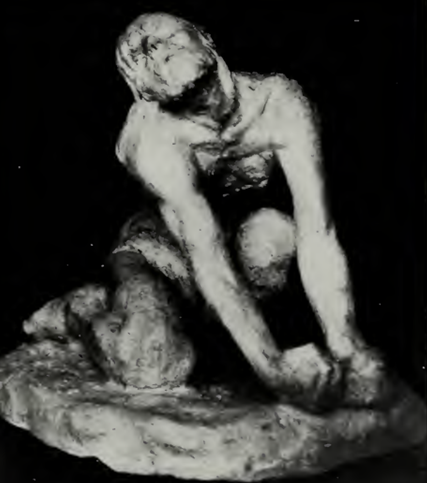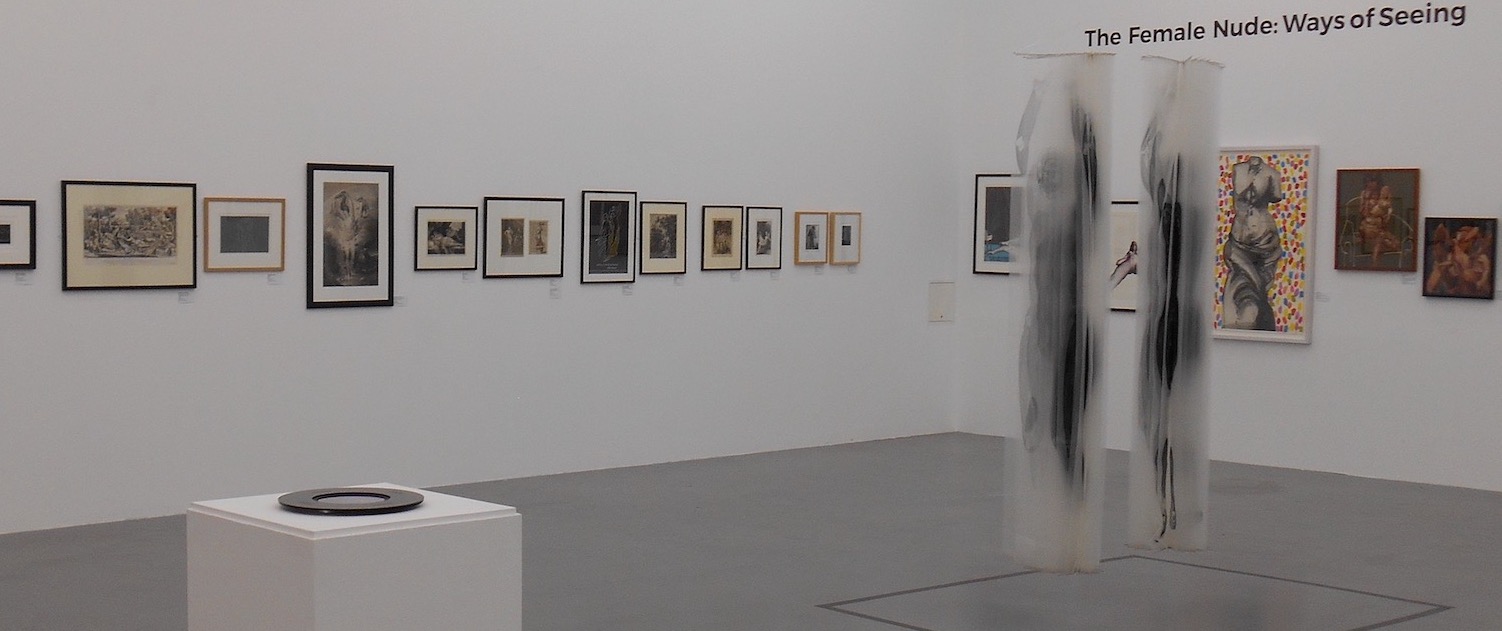How did the experience of living in Paris during fin de siècle translate into Warrick Fuller’s artworks? In order to prove that there are influences to be found there, Aleksandra Chadzynska examines ‘Oedipus’ (c.1900, lost) in terms of two major tendencies in Parisian art of the period; revolutionary new sculptures resulting from Rodin’s practice and impressionism.

Meta Vaux Warrick Fuller, Oedipus, c.1900 (lost)
The notion of capturing the very moment of tension, of the depiction of fleeting emotion, could be clearly seen in Warrick Fuller’s sculpture, obviously referring to Oedipus’ self-harm. It was not a common practice to represent Oedipus’s character during the very act of gouging out his own eyes (for a typical approach see the sculpture by Jean-Baptiste Hugues, finished only five years prior). His blindness symbolizes loneliness and turning away from the world that brings only torment to a person. Tearing out his eyes allows Oedipus to escape from the outside world and focus on the spiritual, transcendent realm. This area is unknown to him, it resembles wandering in the dark. Empty eye sockets can also represent Oedipus’s less literal blindness – he did not see obvious things and truths; he did not admit the fact that he himself could be the cause of the misfortunes befalling Thebes. Warrick Fuller’s Oedipus breaks the typical statuesque, majestic way this character is typically presented, with her choice to depict him in the moment of inflicting self-harm. There is no expression of peace or reconciliation with fate to be found in this piece. Benjamin Griffith Brawley writes: ‘There is nothing delicate or pretty about all such work as this. It is grewsome in fact, and horrible; but it is also strong and intense and vital’ (1919, 65).
What is especially interesting about Warrick Fuller’s depiction of Oedipus is the somewhat cracked shell that seems to be covering the body and face. It can be read as a mask under which there is another person. This is related to the theme of metamorphosis: Oedipus tears off his mask by gouging his eyes out, thus revealing and discovering his true self. Scratches and cracks on the surface have both literal and symbolic meaning. In the first case, they signify disability, physical suffering. In a metaphorical sense, they are a sign of imperfection and being trapped in matter. The Oedipus Meta Warrick Fuller chooses to depict tells the story of a man experienced in suffering, determined by the fate imposed on him from above. It is expressed in the character’s posture, body and face. Forced to shed his mask and discover his true self, he stares upwards. Empty eye sockets force him to explore his soul and suffer: ‘Dark, horror of darkness / my darkness, drowning, swirling around me / crashing wave on wave — unspeakable, irresistible / headwind, fatal harbor! Oh again, / the misery, all at once, over and over / the stabbing daggers, stab of memory / raking me insane’ (Fagles 1982, 59). This clearly links ‘The Oedipus’ to Rodin’s affirmation of presenting the emotional state above all and tendency to make work look intentionally rough or unfinished.
Aleksandra Chadzynska Curating MA
An extract from work undertaken on the module: Study of a Single Artist – Meta Vaux Warrick-Fuller
Brawley, B.G., 1919. Women of achievement: written for the Fireside Schools, under the auspices of the Woman’s American Baptist Home Mission Society, pp.61–69.
Fagles, R. (1982). From Sophocles’ “Oedipus the King.” The Kenyon Review, 4(2), 55–67.
